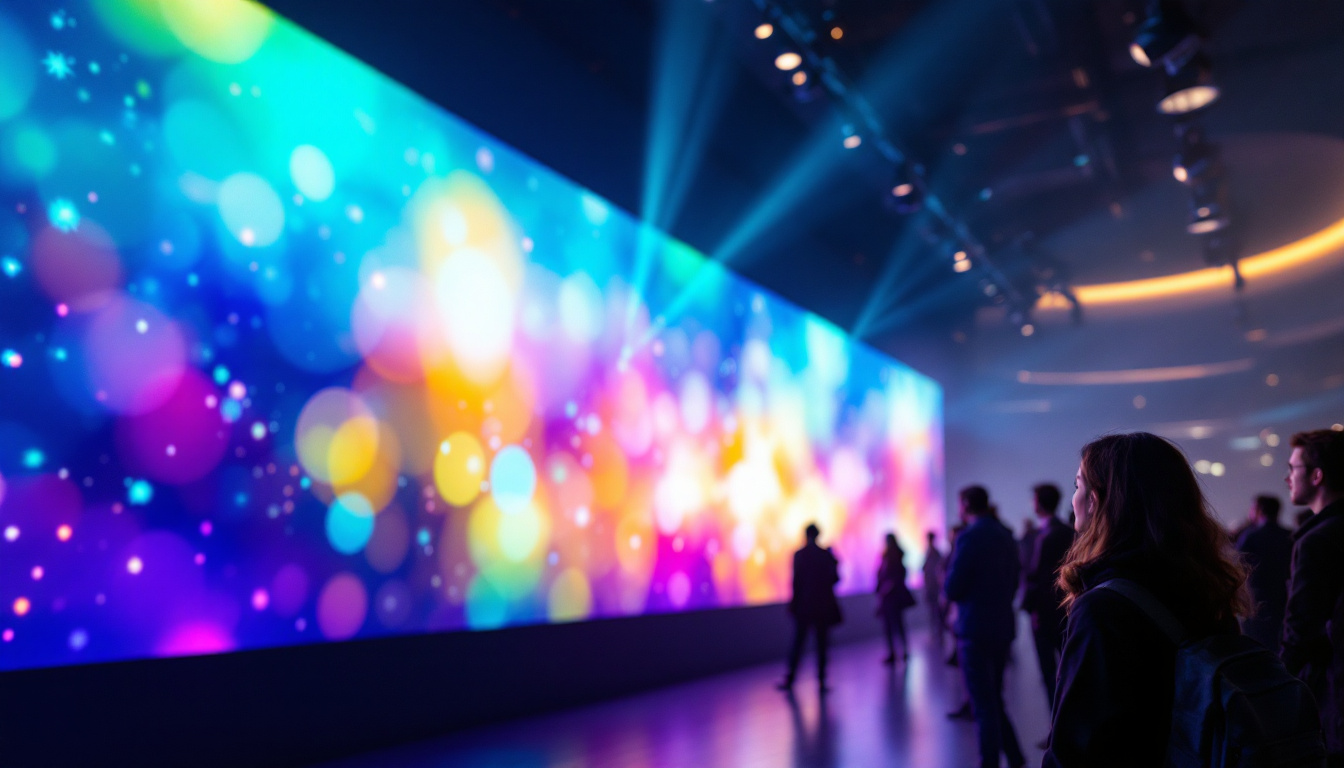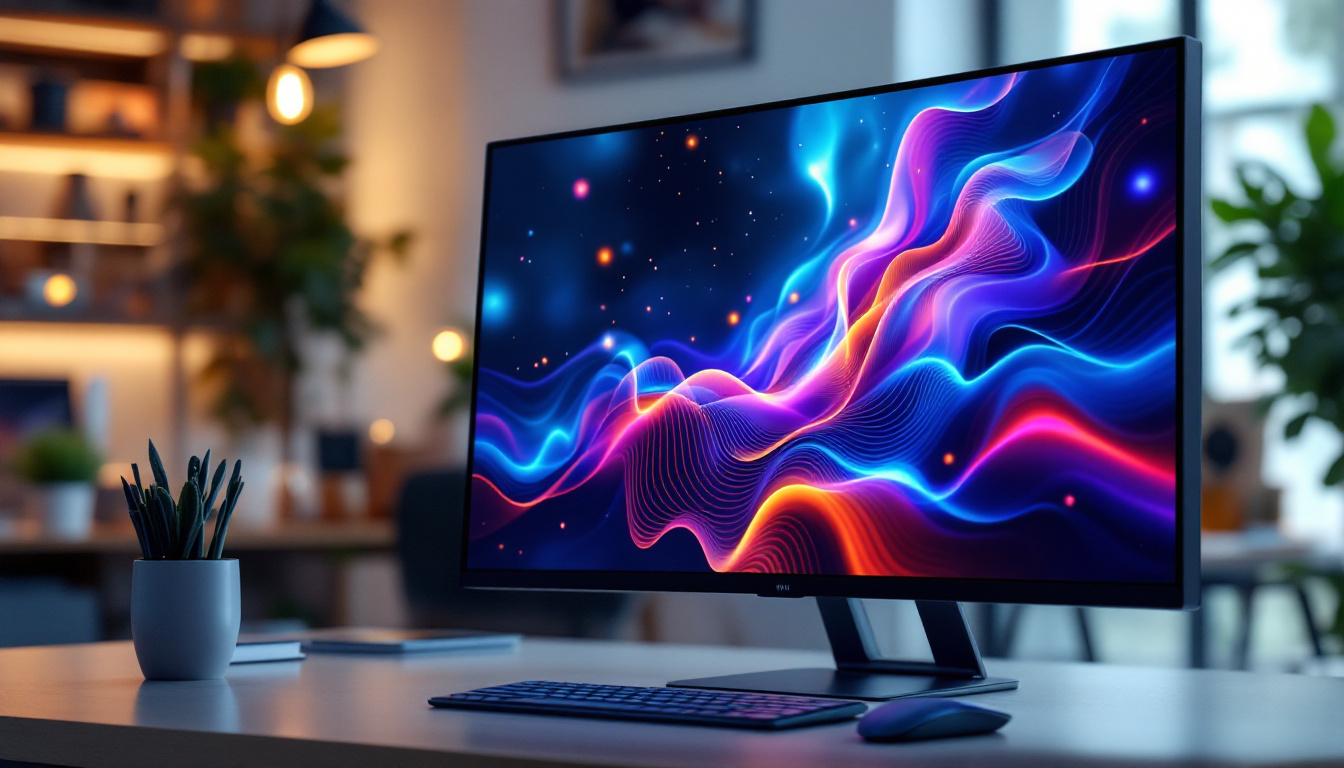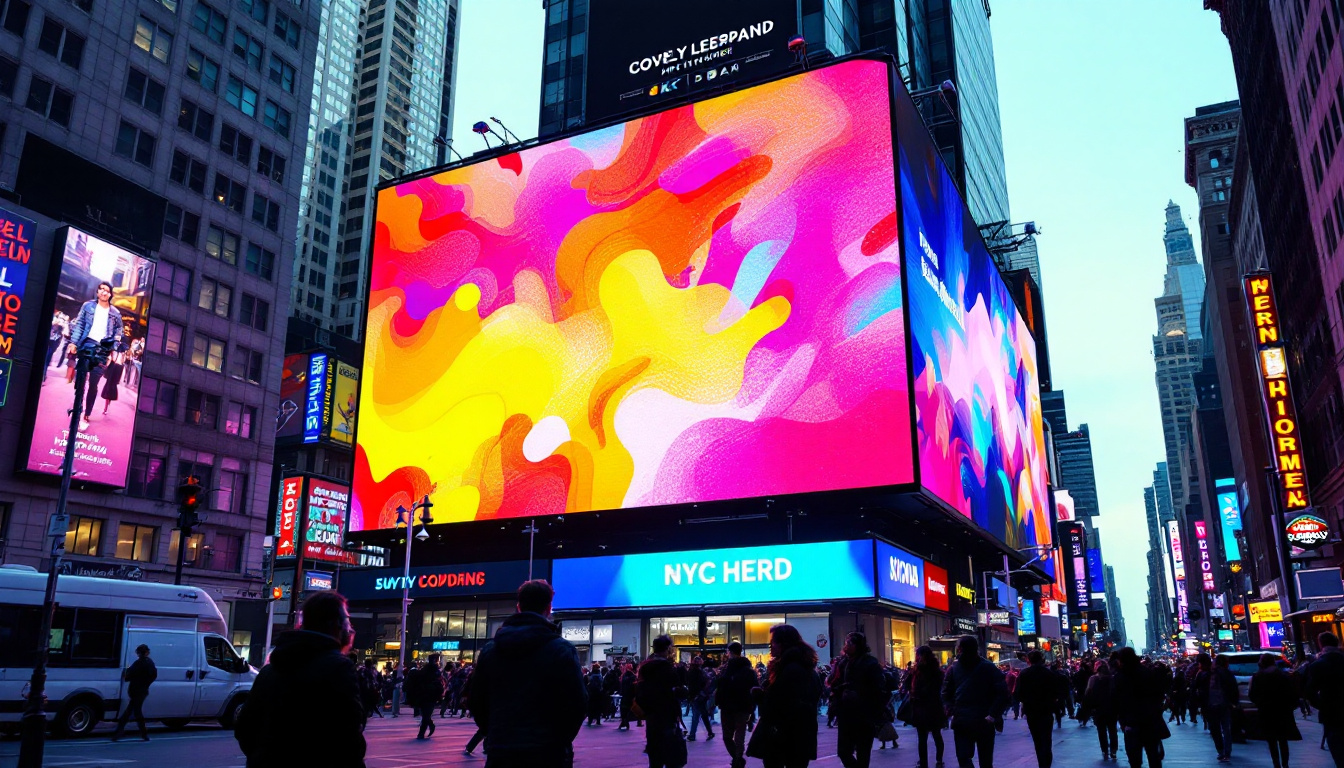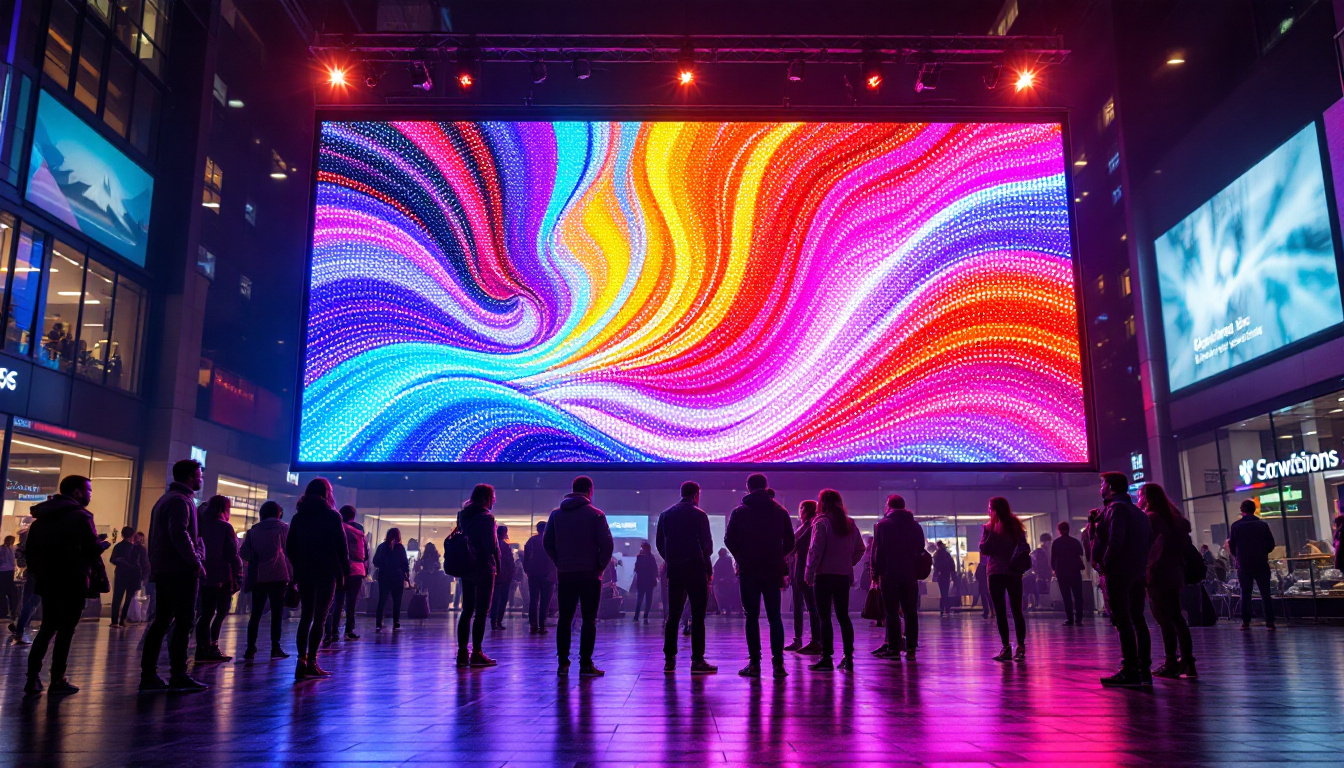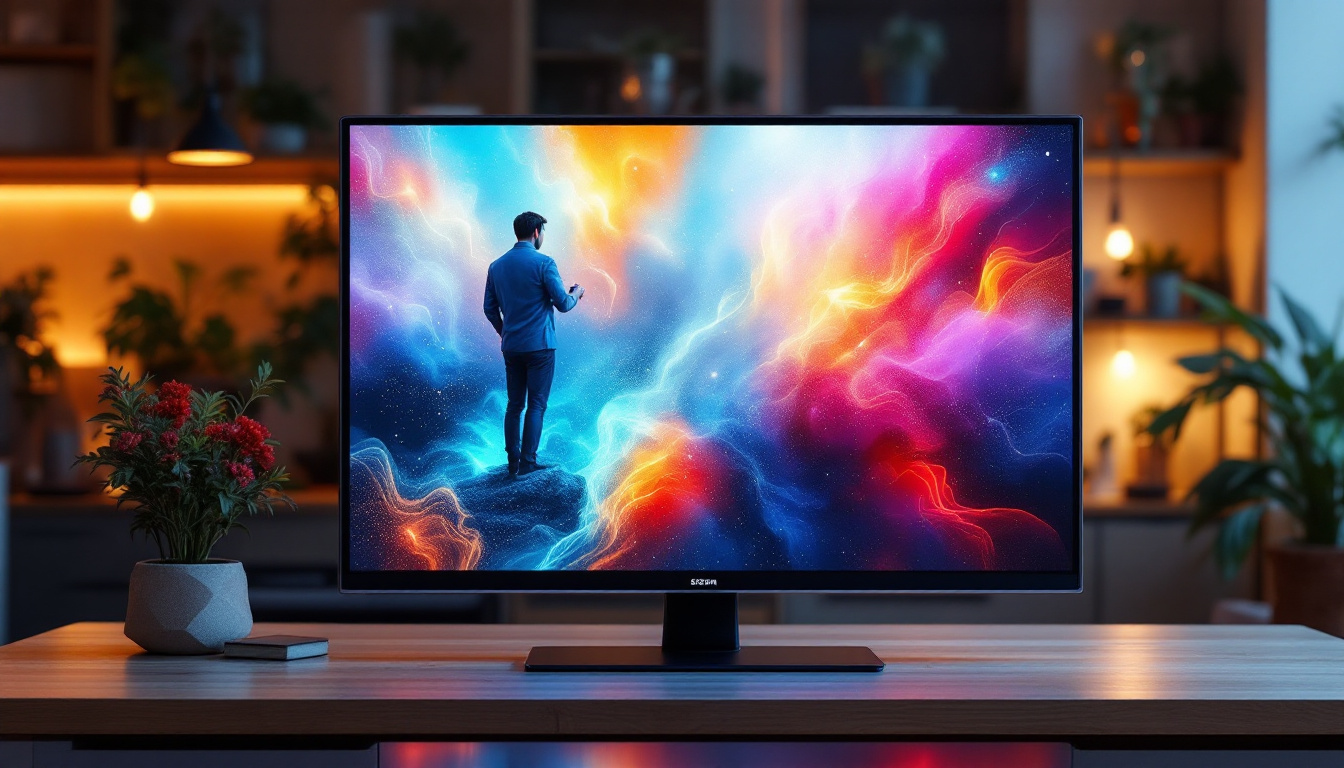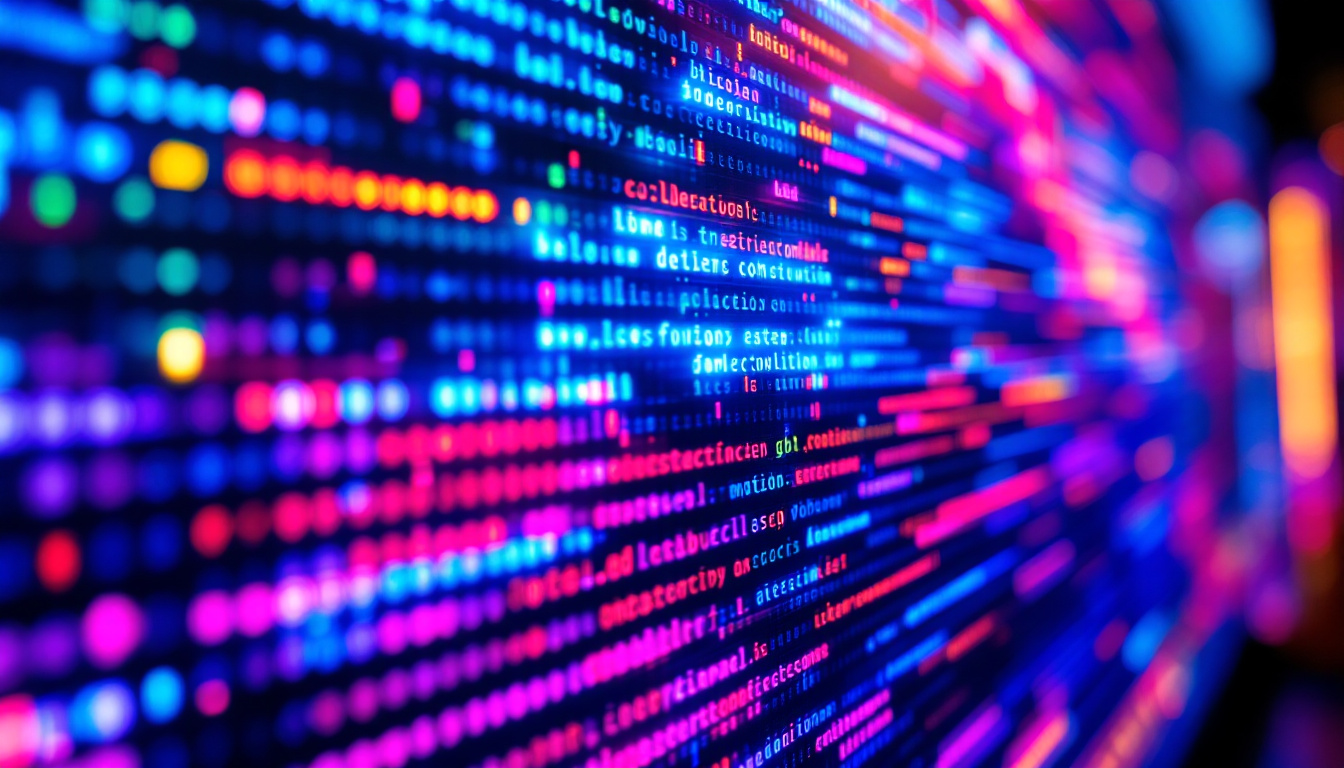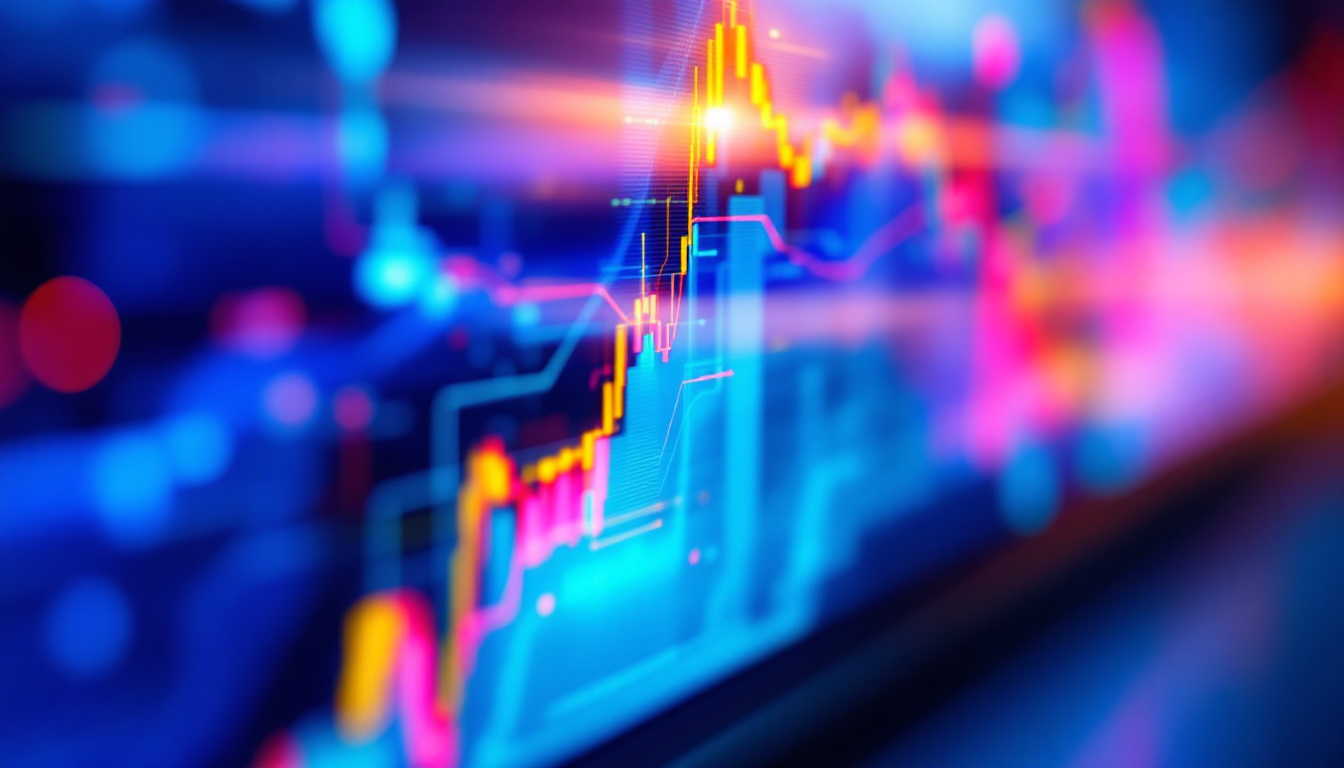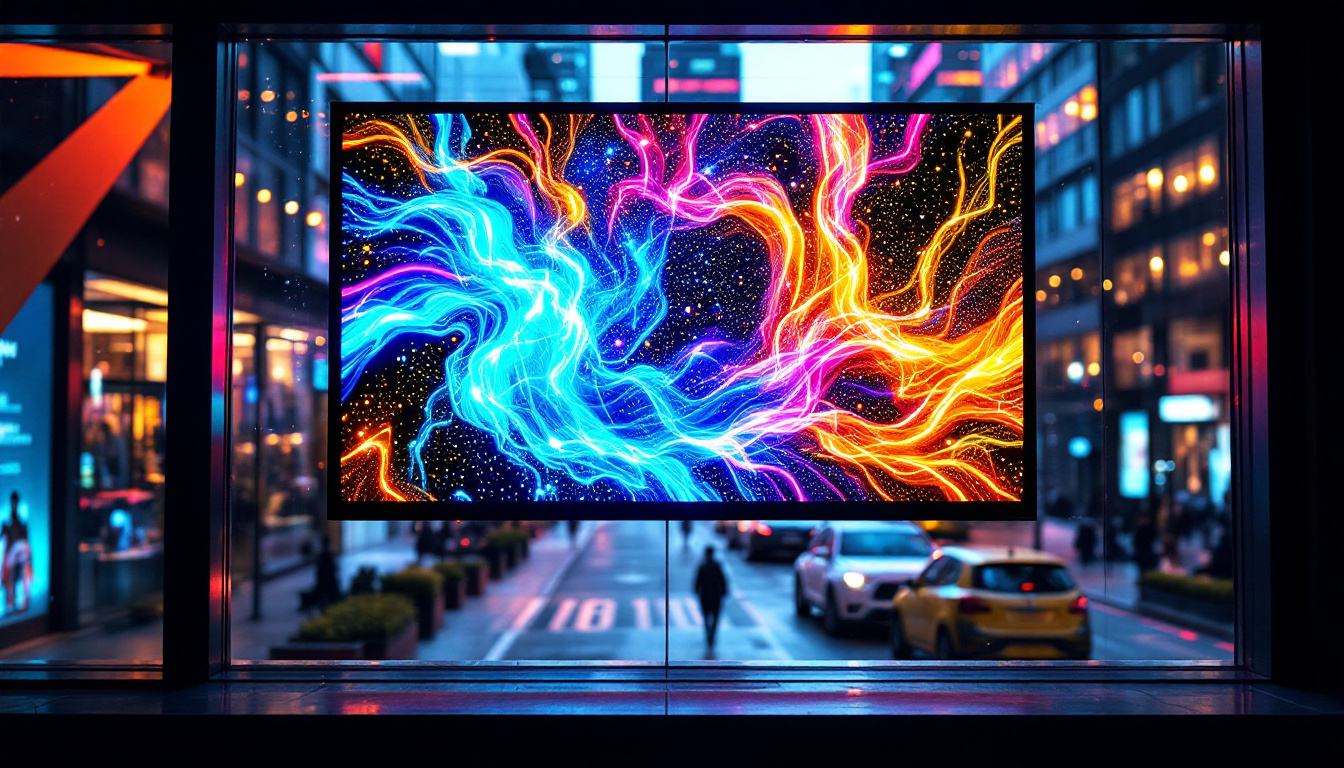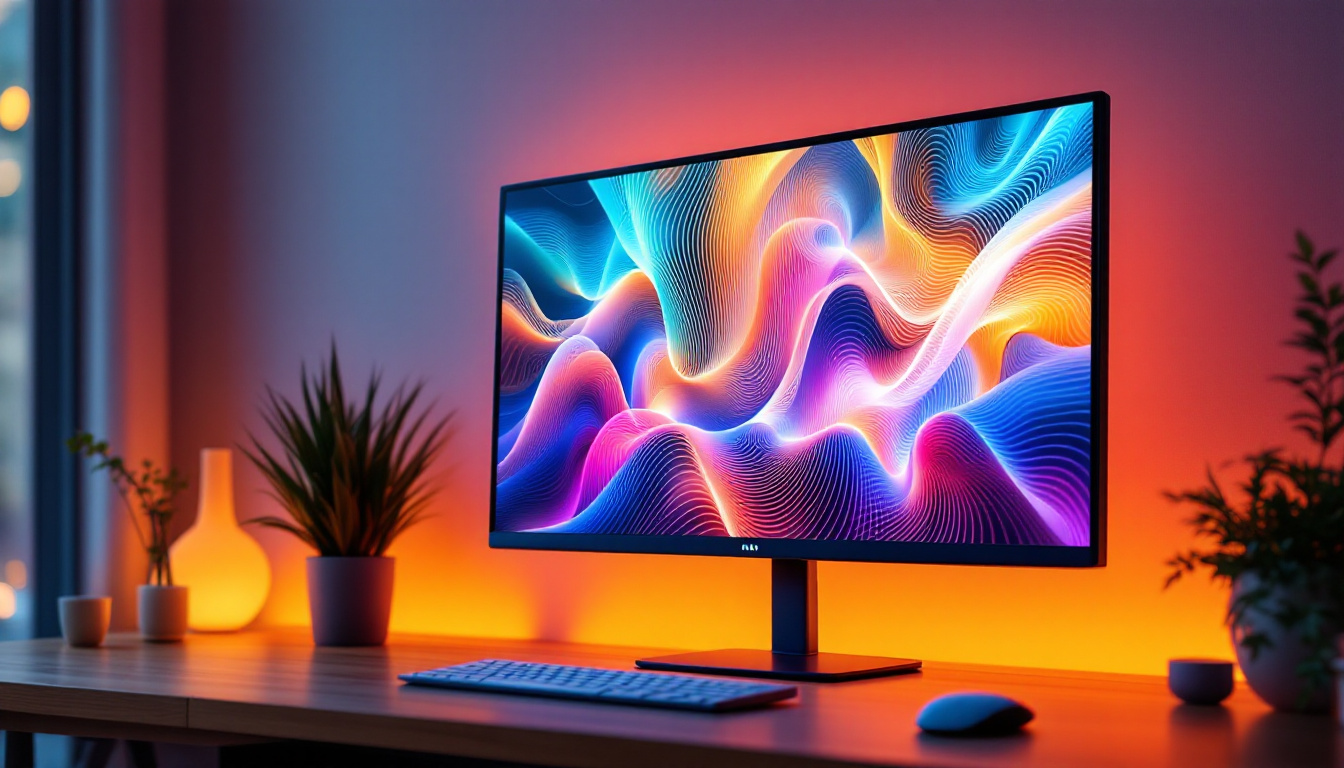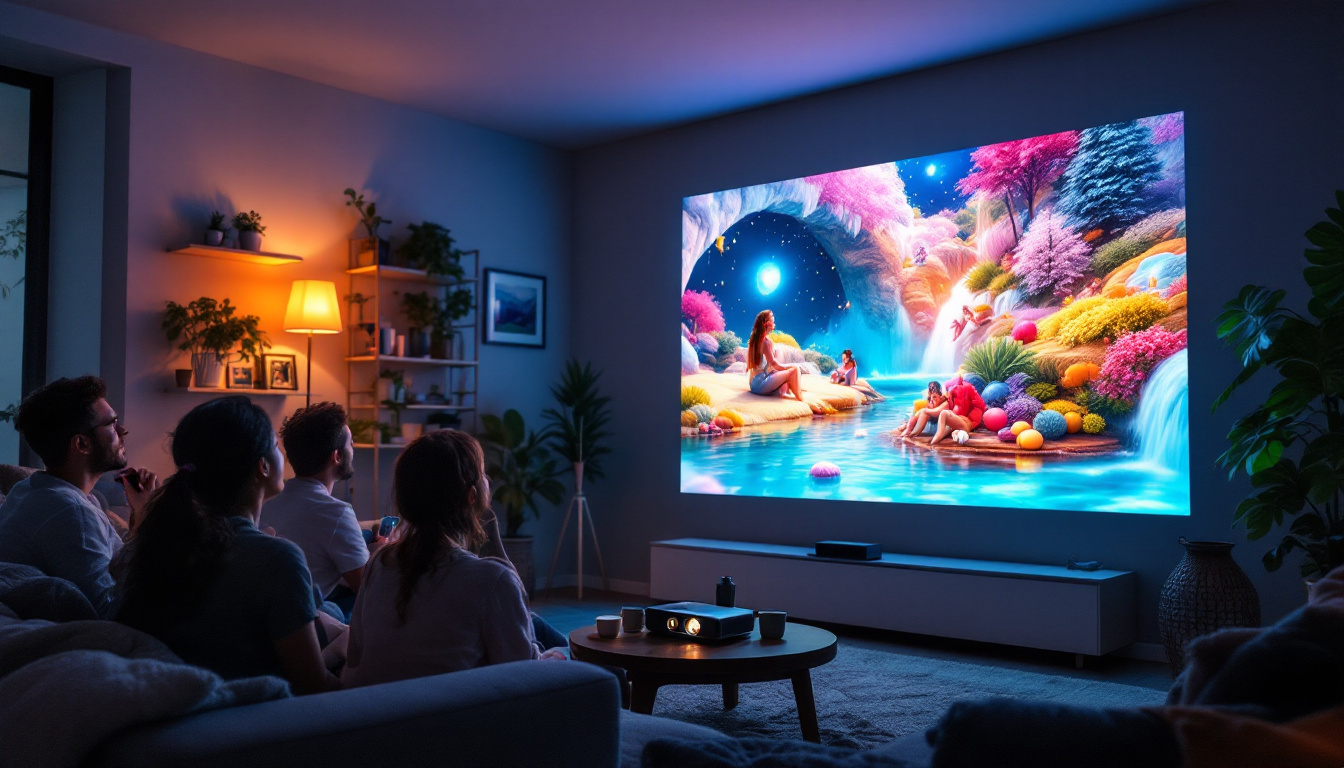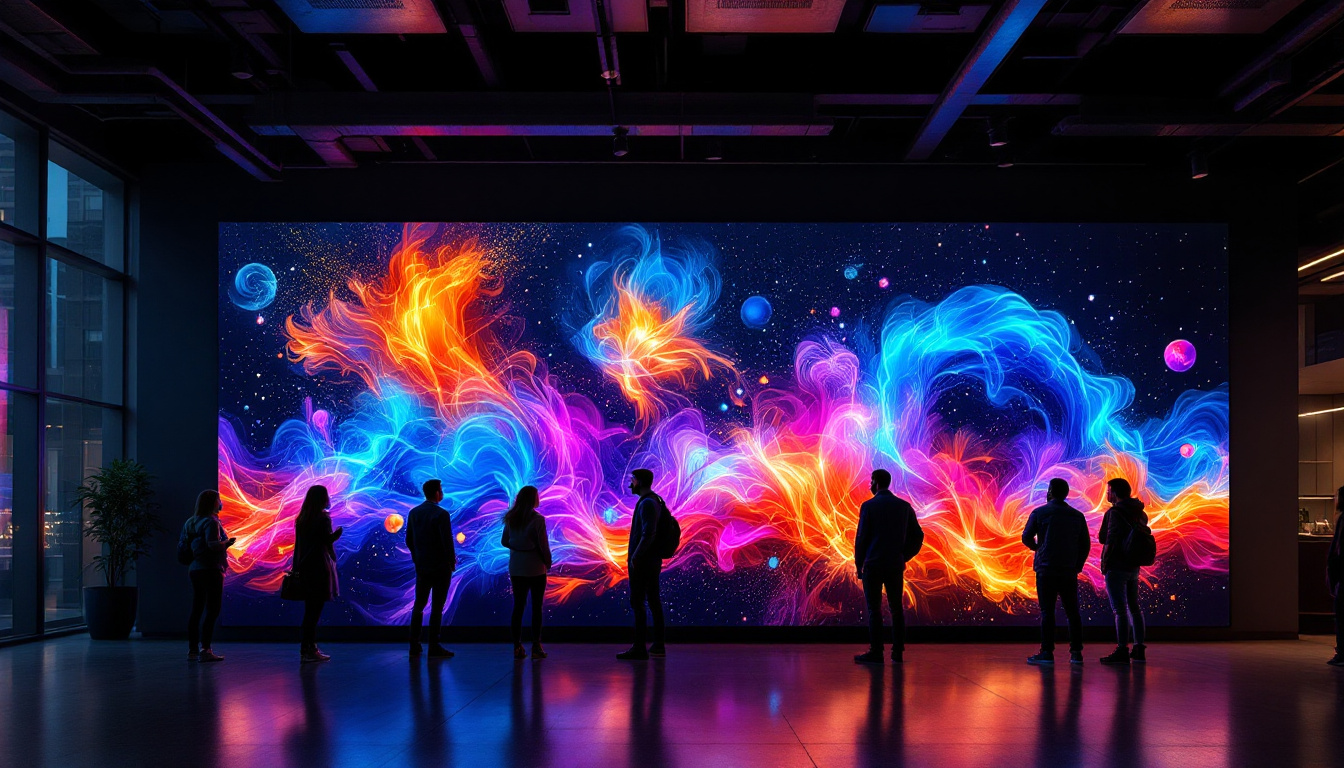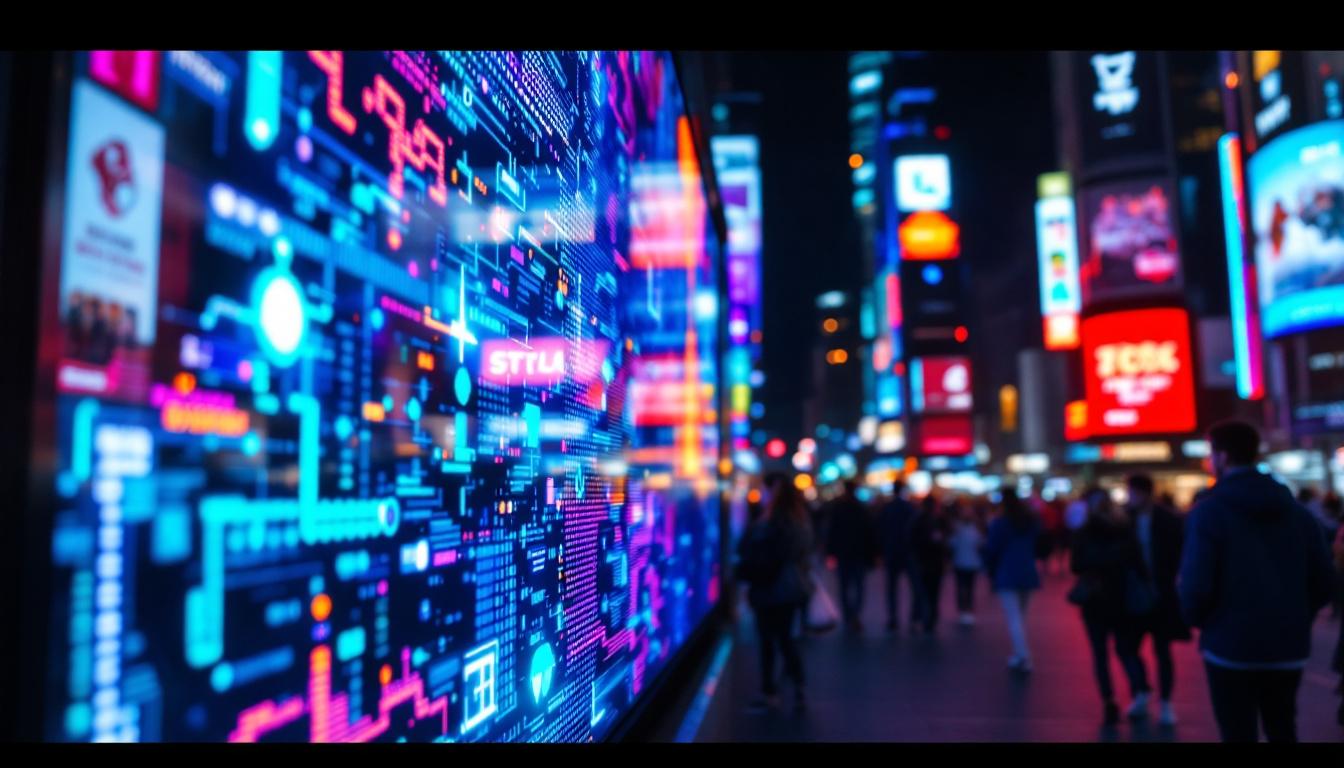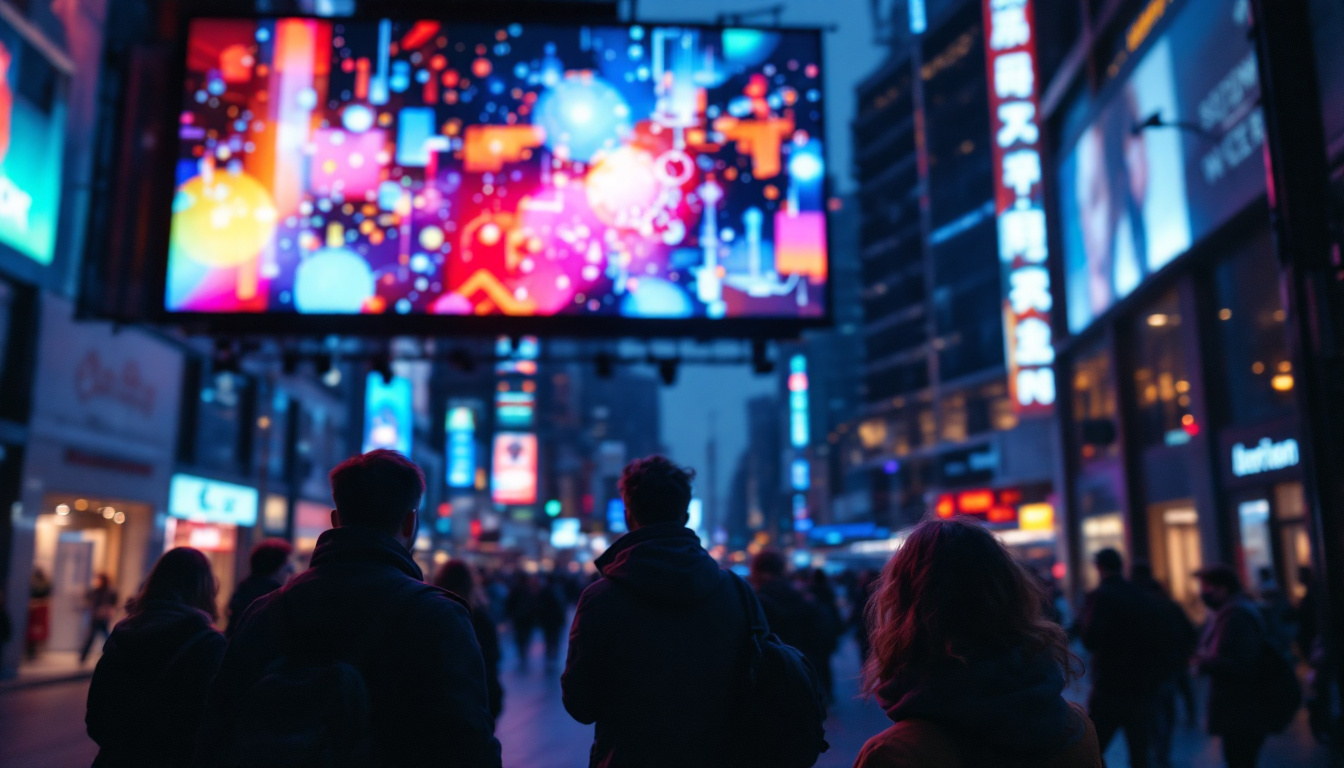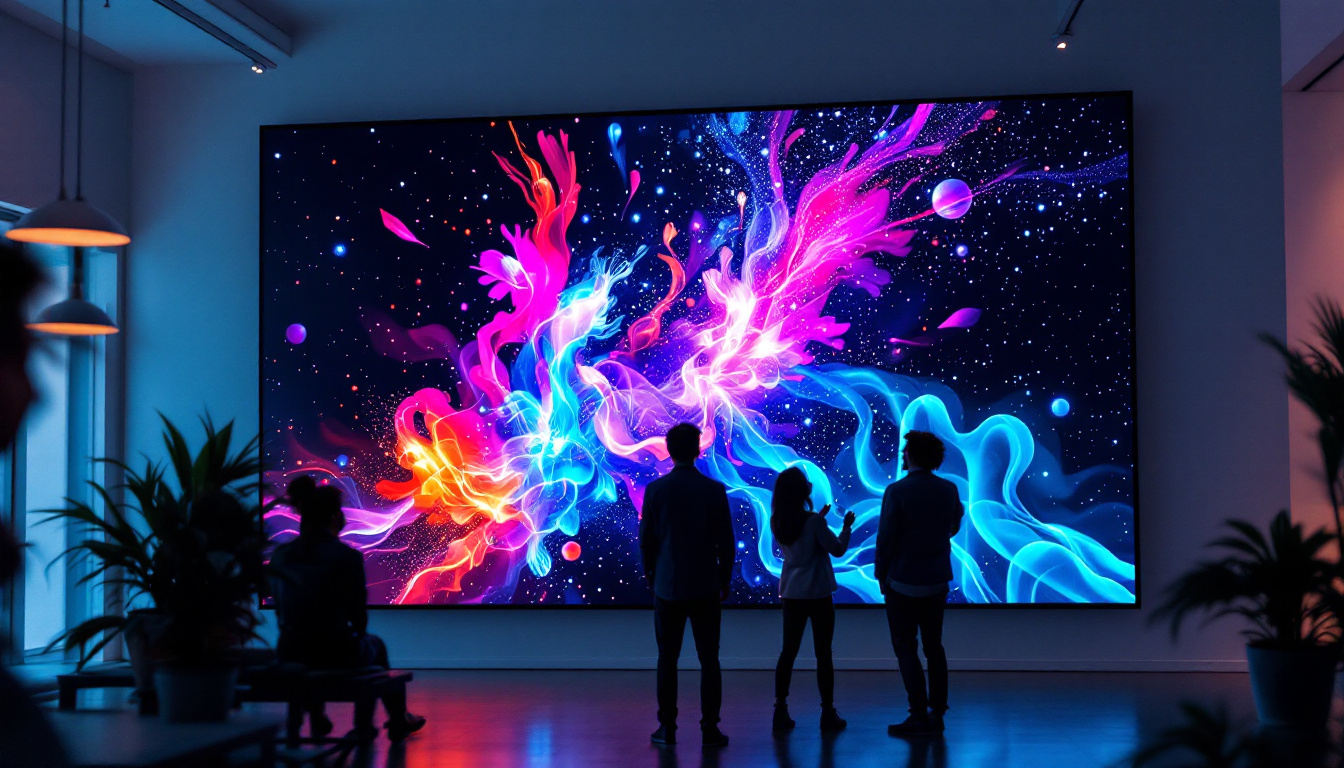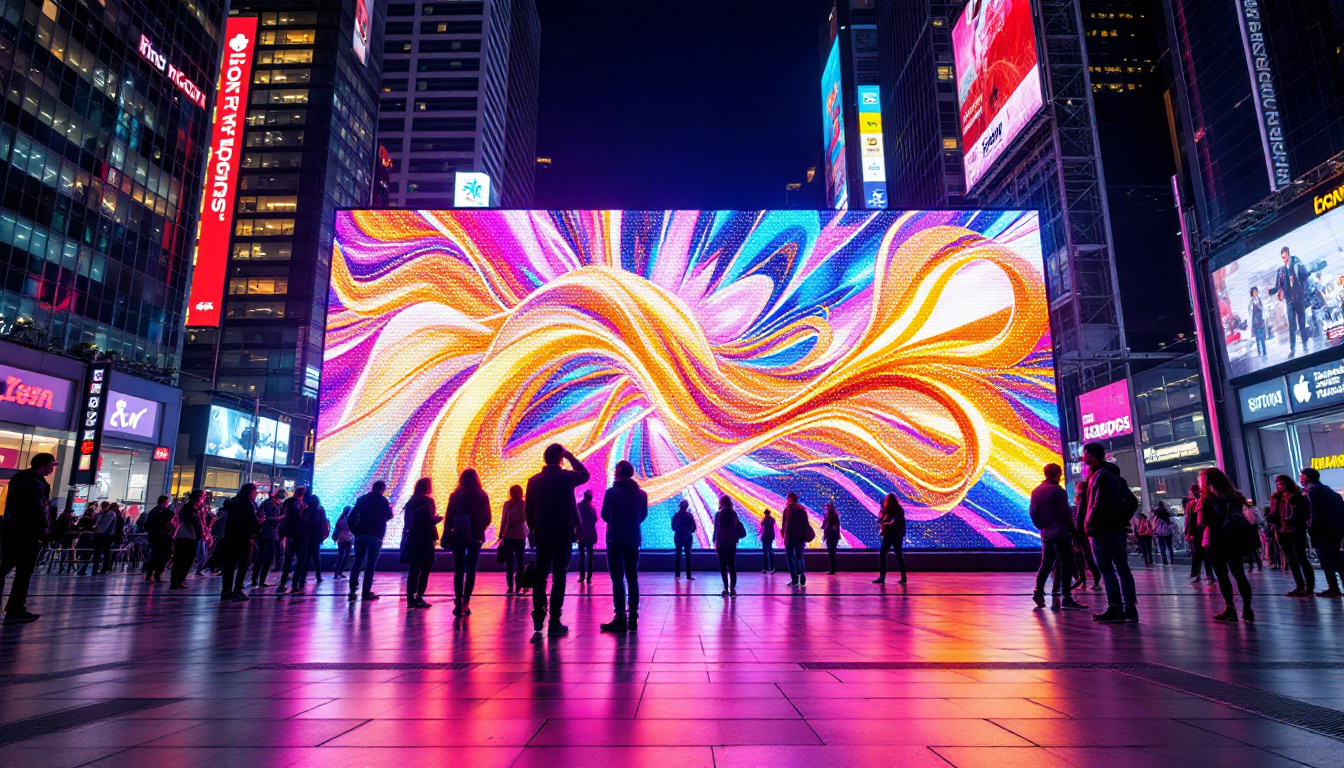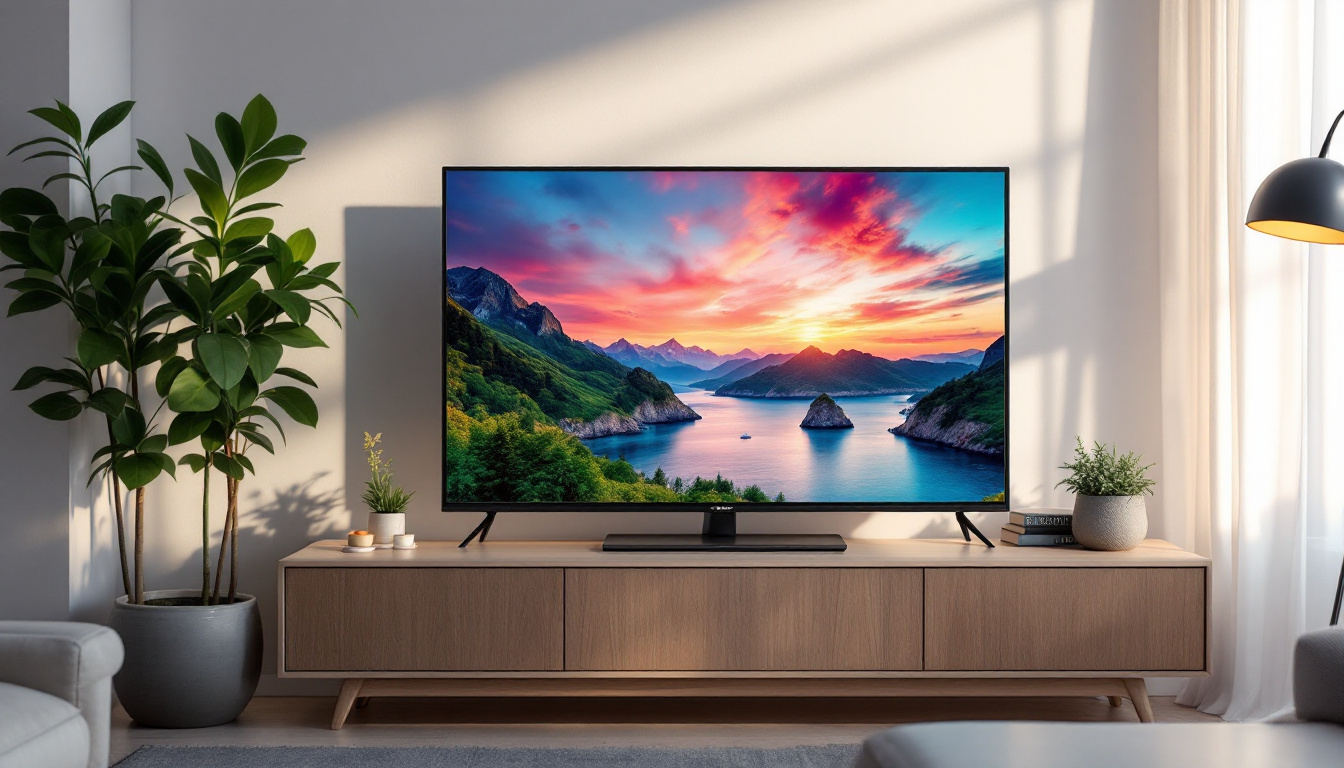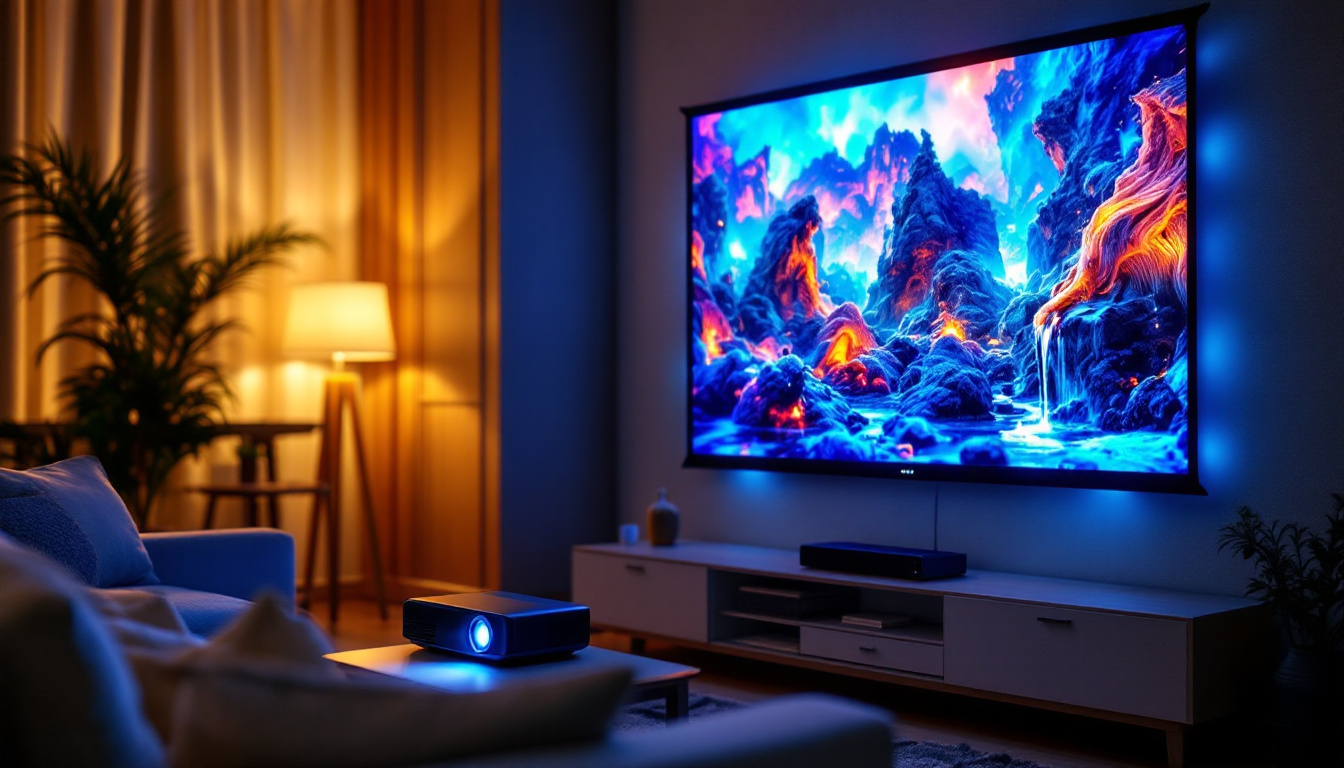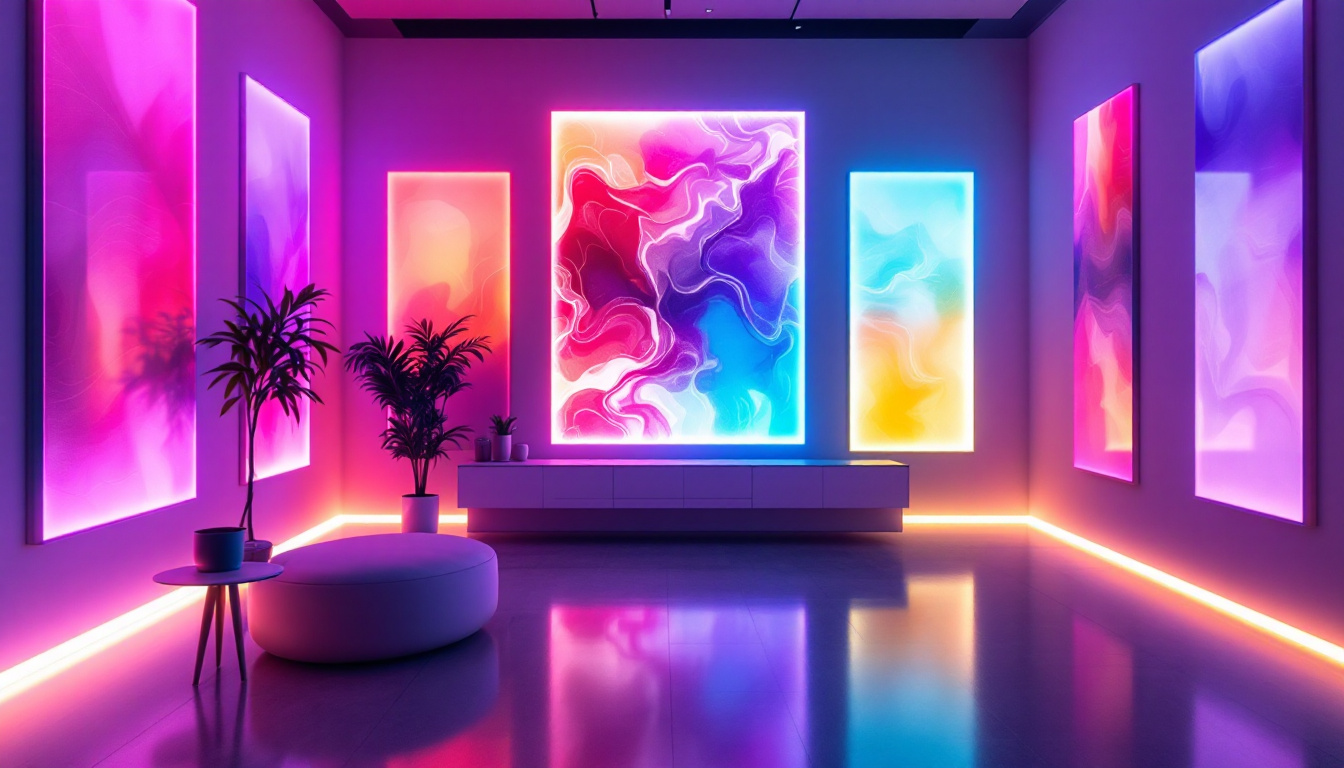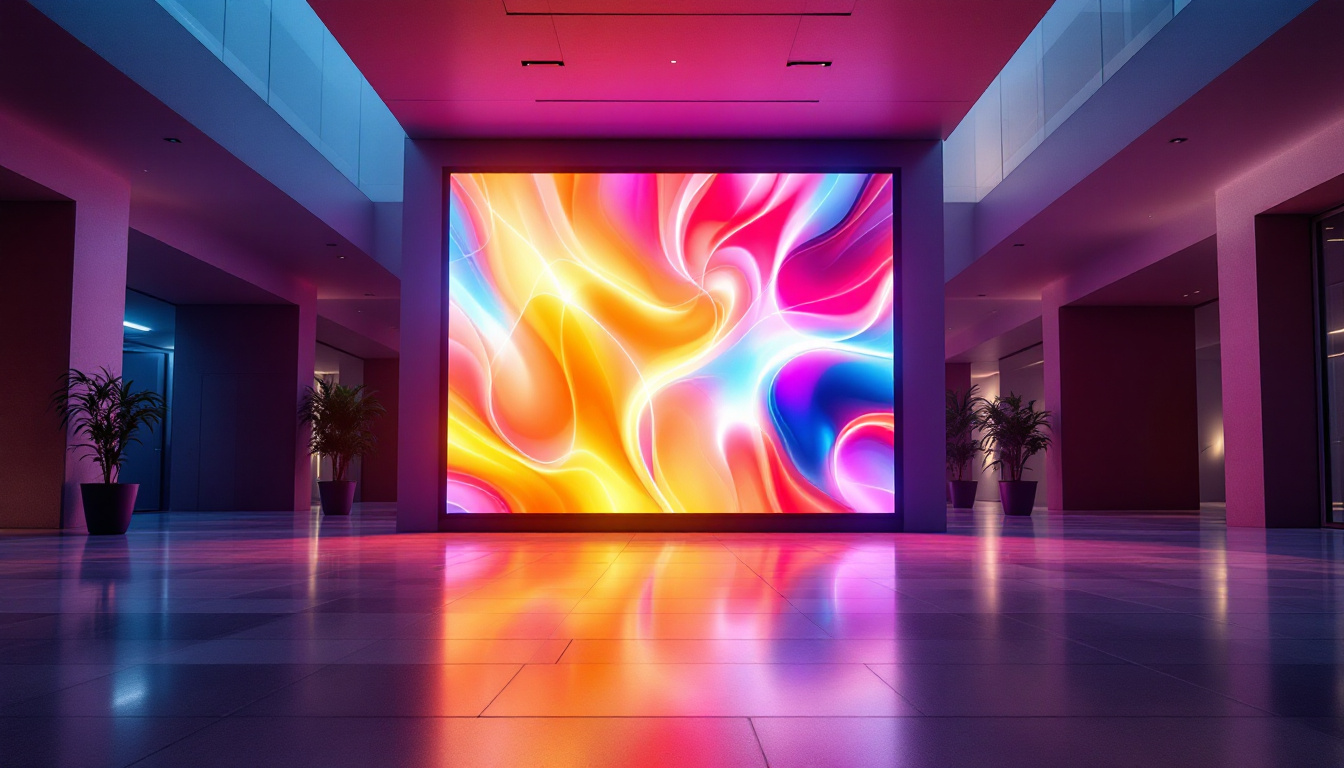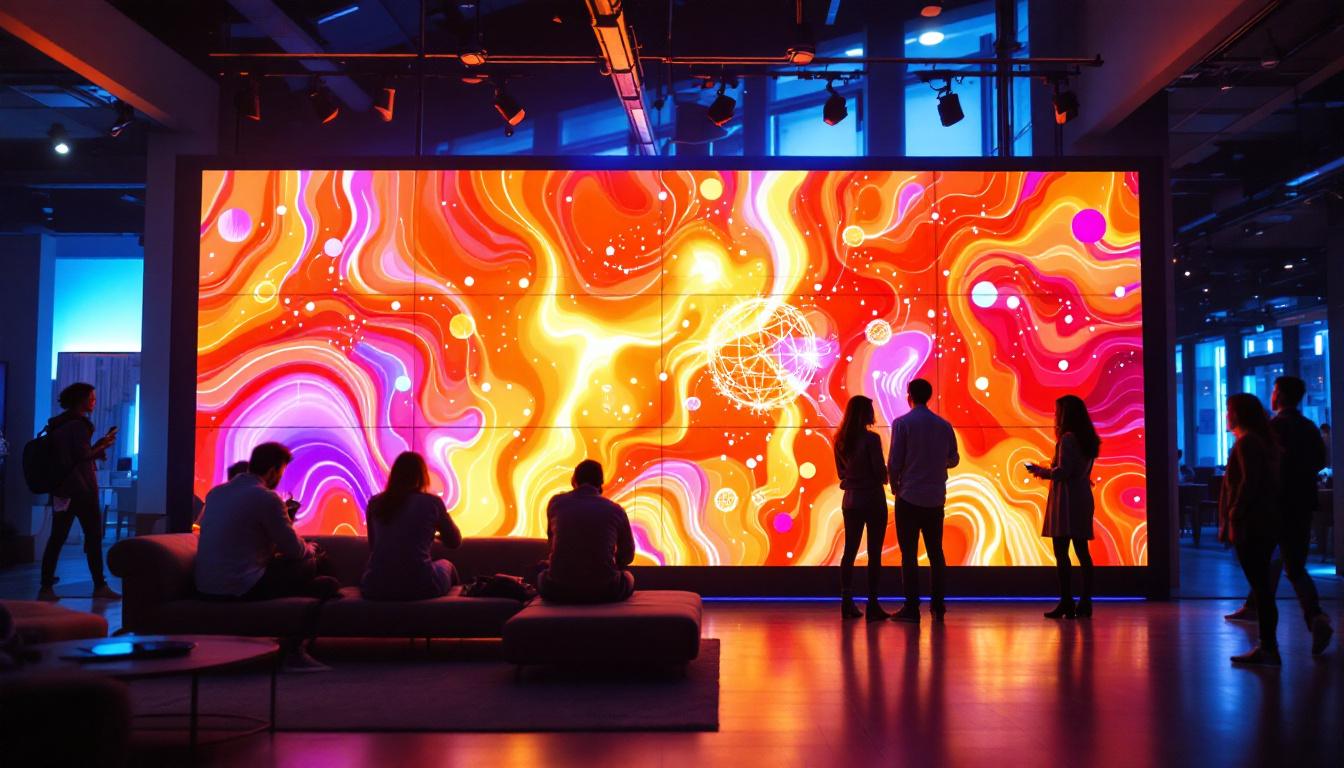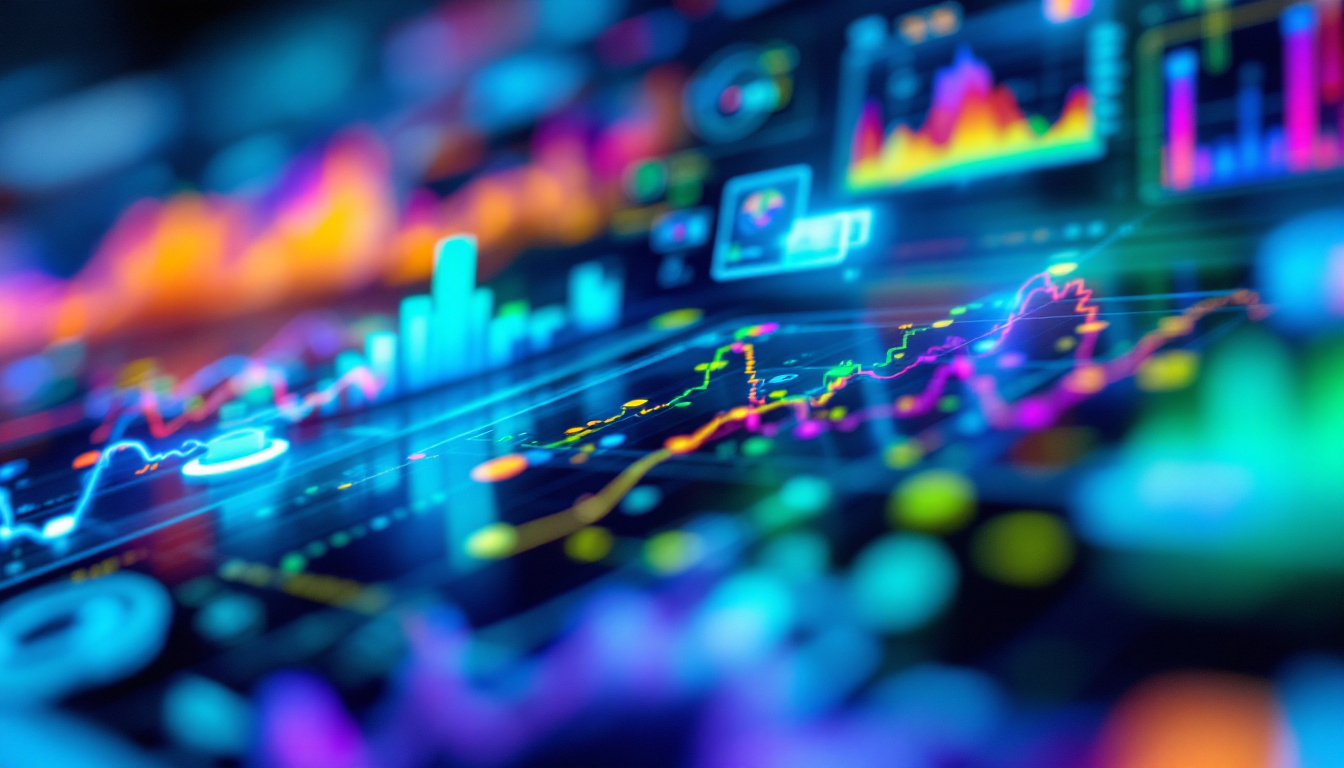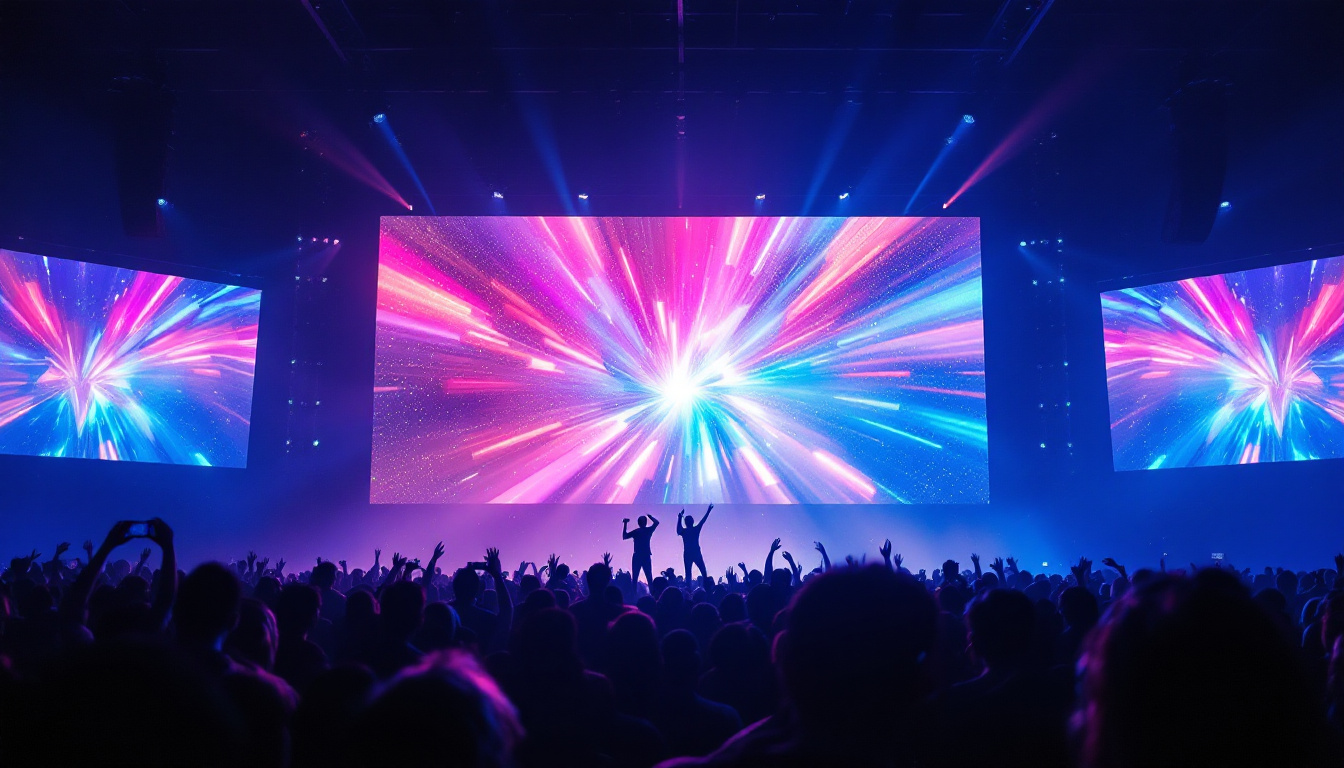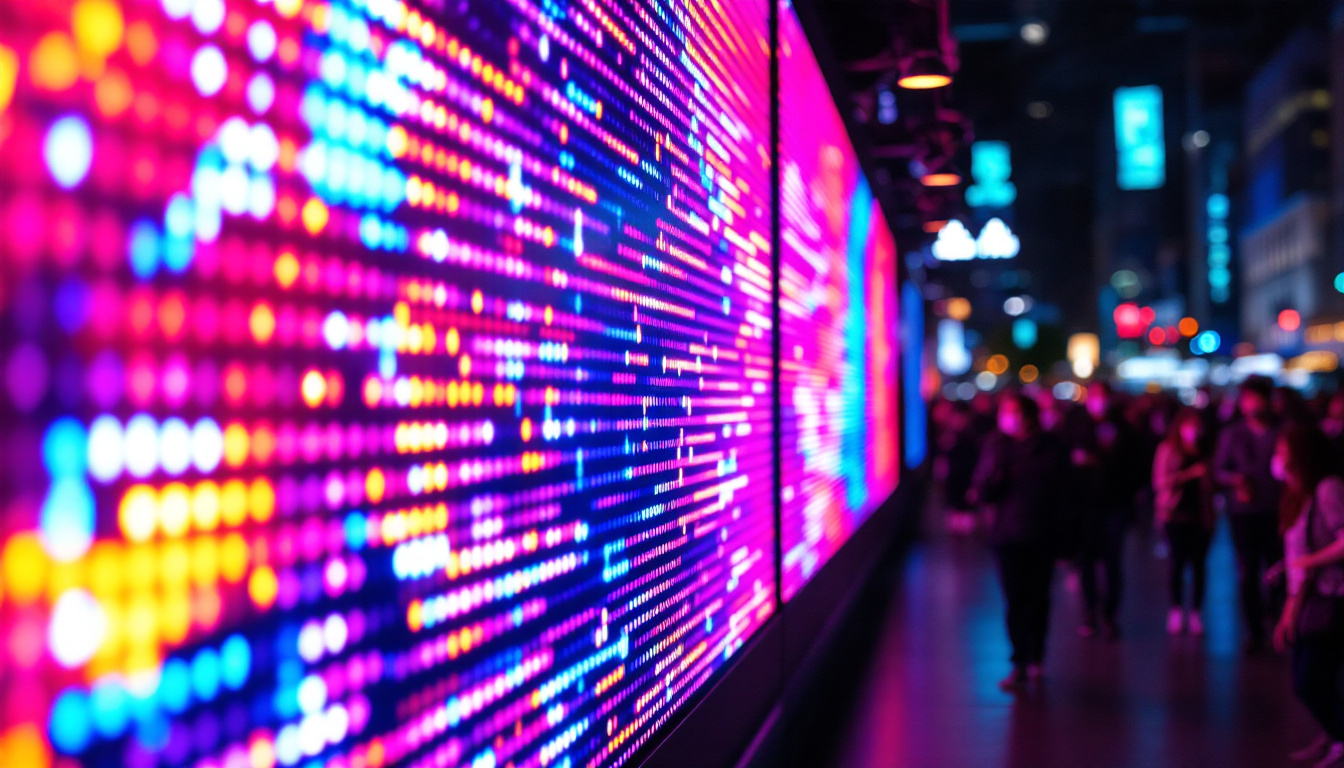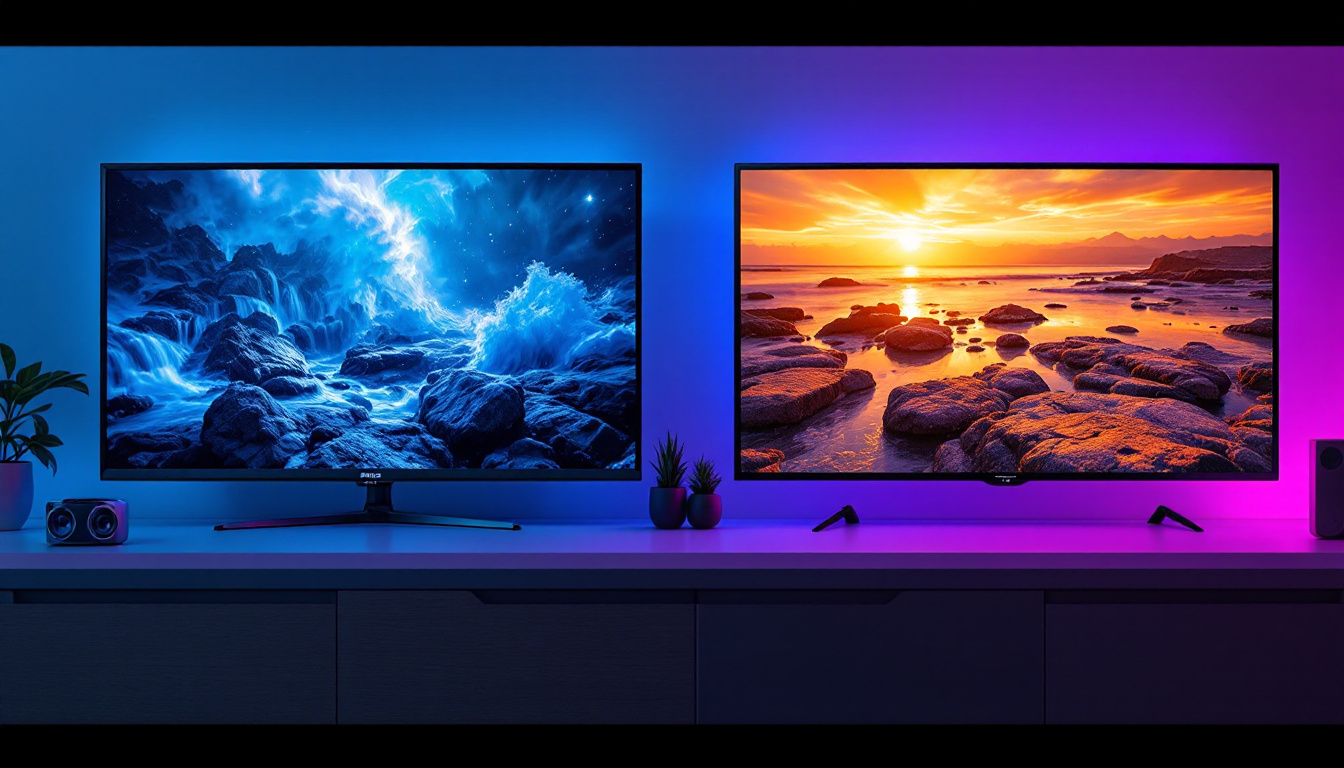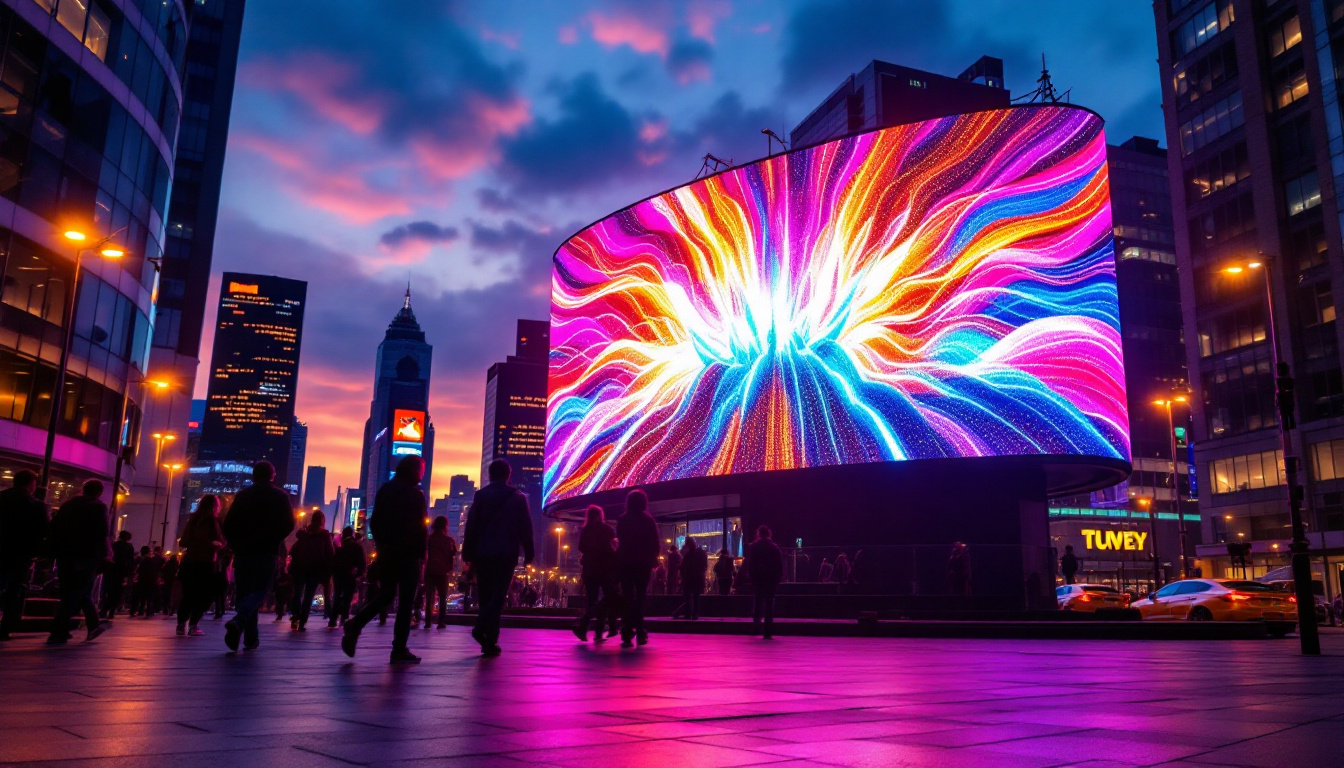In the ever-evolving world of technology, LED displays have emerged as a prominent choice for visual communication. Their versatility, brightness, and energy efficiency make them ideal for a variety of applications, from advertising to entertainment. This article delves into the intricacies of LED displays, exploring their types, benefits, and applications, while also examining the innovative concept of LED film.
Understanding LED Displays
LED, or Light Emitting Diode, displays utilize semiconductor technology to produce light. These displays have revolutionized the way information is conveyed, offering vibrant colors and high resolution. They are commonly found in televisions, billboards, and digital signage, among other uses. The growing popularity of LED technology can be attributed to its energy efficiency and longevity, making it an environmentally friendly choice for both consumers and businesses alike.
Types of LED Displays
LED displays can be categorized into several types based on their construction and application. The most common types include:
- Direct View LED Displays: These displays consist of individual LED modules that are arranged in a grid. They are often used for large outdoor screens and digital billboards, providing eye-catching visuals that can be seen from great distances, even in bright sunlight.
- LED Backlit Displays: These displays use LEDs to illuminate an LCD panel from behind. This technology is commonly found in televisions and computer monitors, providing improved contrast and color accuracy. The backlighting allows for thinner screens and enhances the overall viewing experience, particularly in darker environments.
- MicroLED Displays: A newer technology, MicroLED displays use microscopic LEDs to create images. They offer exceptional brightness and contrast, making them suitable for high-end televisions and commercial applications. MicroLED technology also allows for modular designs, enabling screens of various sizes and shapes to be created without compromising on quality.
How LED Displays Work
The functionality of LED displays is based on the principles of electroluminescence. When an electric current passes through a semiconductor material, it emits light. In an LED display, each pixel is made up of red, green, and blue (RGB) subpixels, which can be adjusted to create a wide spectrum of colors. This RGB configuration is fundamental to the display’s ability to produce vibrant and lifelike images.
By varying the intensity of each subpixel, LED displays can produce images with remarkable clarity and detail. This capability is particularly beneficial for applications requiring high-resolution visuals, such as video walls and digital signage. Furthermore, advancements in technology have led to the development of features like HDR (High Dynamic Range), which enhances the contrast and color range, providing viewers with an even more immersive experience. The rapid evolution of LED technology continues to push the boundaries of what is possible, paving the way for innovations in both consumer electronics and professional display solutions.
Advantages of LED Displays
The popularity of LED displays can be attributed to numerous advantages they offer over traditional display technologies. Some of the key benefits include:
Energy Efficiency
LED displays consume significantly less power compared to their LCD and plasma counterparts. This energy efficiency translates to lower operational costs, making them a sustainable choice for businesses and consumers alike. Furthermore, the reduced energy consumption contributes to a smaller carbon footprint, aligning with global efforts to promote eco-friendly technologies. As energy prices continue to rise, the cost savings associated with LED displays become even more appealing, encouraging more organizations to make the switch.
Brightness and Visibility
One of the standout features of LED displays is their brightness. They can produce vivid colors and high contrast ratios, ensuring visibility even in direct sunlight. This characteristic makes them ideal for outdoor advertising and public displays. In addition, the wide viewing angles offered by LED technology allow for a larger audience to appreciate the content without distortion. This is particularly beneficial in crowded environments such as stadiums or festivals, where clear visibility is crucial for effective communication and engagement.
Longevity and Durability
LED technology boasts a long lifespan, often exceeding 50,000 hours of use. This durability reduces the need for frequent replacements, resulting in lower maintenance costs. Additionally, LED displays are more resistant to shock and vibration, making them suitable for various environments. Their robust construction allows them to withstand harsh weather conditions, such as heavy rain or extreme temperatures, which is essential for outdoor installations. Moreover, the low heat emission of LED displays not only enhances their longevity but also minimizes the risk of overheating, further solidifying their reputation as a reliable choice for both commercial and residential applications.
Versatility in Application
Another significant advantage of LED displays is their versatility. They can be utilized in a wide range of settings, from retail stores and corporate offices to concerts and sporting events. The ability to customize size and shape allows for creative installations that can fit any space. Additionally, advancements in technology have led to the development of flexible LED screens that can be curved or shaped to create unique visual experiences, further expanding their potential applications. This adaptability makes LED displays a favorite among advertisers and event planners, who can leverage their dynamic capabilities to captivate audiences in innovative ways.
Applications of LED Displays
The versatility of LED displays allows them to be employed in a wide range of applications. From commercial use to artistic installations, their adaptability is unmatched.
Advertising and Marketing
One of the most common uses of LED displays is in advertising. Businesses utilize bright, eye-catching displays to attract customers and convey messages effectively. Digital billboards, for instance, can showcase multiple advertisements in a single location, maximizing exposure.
Entertainment and Events
In the entertainment industry, LED displays play a crucial role in concerts, sports events, and theatrical productions. large video walls enhance the audience’s experience, providing dynamic visuals that complement performances. Moreover, LED screens are often used for live streaming events, ensuring that audiences can view content from a distance.
Transportation and Wayfinding
LED displays are increasingly being used in transportation systems for real-time information dissemination. Train stations, airports, and bus terminals utilize LED screens to provide travelers with updates on schedules, delays, and other essential information. This application enhances the overall travel experience by keeping passengers informed.
Introducing LED Film
LED film represents a groundbreaking advancement in display technology. Unlike traditional LED displays, LED film is ultra-thin and flexible, allowing for innovative applications in various settings.
What is LED Film?
LED film consists of a thin layer of LEDs embedded in a flexible substrate. This design enables the film to be applied to various surfaces, including curved or irregular shapes. The lightweight nature of LED film also makes it easy to install and transport, opening up new possibilities for display applications.
Benefits of LED Film
The introduction of LED film brings several advantages to the world of displays:
- Flexibility: The ability to bend and shape LED film allows for creative installations that were previously impossible with rigid displays.
- Lightweight: LED film is significantly lighter than traditional displays, making it easier to handle and install.
- Customizability: LED film can be produced in various sizes and shapes, allowing businesses to create unique visual experiences tailored to their needs.
Applications of LED Film
The versatility of LED film enables its use in a wide array of applications, enhancing both aesthetic appeal and functionality.
Architectural Installations
LED film can be seamlessly integrated into architectural designs, allowing buildings to showcase dynamic visuals. This application is particularly popular in modern architecture, where LED film can be used to create stunning facades or interactive displays that engage passersby.
Retail and Branding
In retail environments, LED film can be used to enhance product displays and create immersive shopping experiences. Retailers can utilize LED film to project promotional content directly onto products or surfaces, capturing the attention of customers and driving sales.
Events and Exhibitions
LED film is increasingly being used in exhibitions and events to create captivating displays. Its flexibility allows for unique setups that can adapt to different spaces, providing a dynamic backdrop for presentations, product launches, and trade shows.
Challenges and Considerations
While LED displays and LED film offer numerous benefits, there are also challenges and considerations to keep in mind when implementing these technologies.
Cost Factors
The initial investment for LED displays and LED film can be significant. Businesses must weigh the long-term benefits against the upfront costs. However, the energy savings and reduced maintenance costs can often justify the initial expenditure.
Installation and Maintenance
Proper installation is crucial for maximizing the performance of LED displays and films. Businesses should consider hiring professionals with experience in LED technology to ensure optimal results. Additionally, while LED displays are generally low maintenance, regular checks and cleaning are necessary to maintain their performance and longevity.
Environmental Impact
As with any technology, the environmental impact of LED displays and films should be considered. While LED technology is more energy-efficient than traditional displays, the manufacturing process and disposal of electronic components can pose environmental challenges. It is essential for businesses to adopt sustainable practices when implementing these technologies.
The Future of LED Displays and Film
The future of LED displays and LED film looks promising, with ongoing advancements in technology and design. As manufacturers continue to innovate, the capabilities of these displays are expected to expand, leading to even more creative applications.
Technological Advancements
Future developments in LED technology may include improvements in resolution, color accuracy, and energy efficiency. Innovations such as transparent LED displays and interactive surfaces are already on the horizon, paving the way for new experiences in visual communication.
Integration with Other Technologies
As the Internet of Things (IoT) continues to grow, the integration of LED displays with smart technologies will likely become more prevalent. This integration could enable real-time data visualization, personalized content delivery, and enhanced interactivity, transforming the way businesses engage with their audiences.
Creative Applications
The flexibility of LED film opens up a world of creative possibilities. Artists and designers are already exploring its potential for interactive installations and immersive experiences. As the technology becomes more accessible, it is expected that we will see a surge in innovative applications across various industries.
Conclusion
LED displays and LED film are at the forefront of visual communication technology, offering unparalleled brightness, energy efficiency, and versatility. As businesses and creators continue to explore their potential, these technologies are set to redefine how information is presented and experienced. From advertising to architectural design, the applications are vast and varied, making LED displays and films an essential component of modern communication strategies.
As the industry evolves, staying informed about the latest developments in LED technology will be crucial for businesses looking to leverage these advancements effectively. Embracing LED displays and film not only enhances visual experiences but also positions organizations at the cutting edge of innovation.
Discover LumenMatrix LED Display Solutions
Ready to elevate your visual communication strategy with the latest in LED technology? LumenMatrix is at the forefront of innovation, offering a diverse range of LED display solutions tailored to your needs. Whether you’re looking for Indoor LED Wall Displays, Outdoor LED Wall Displays, or specialized options like Vehicle LED Displays and LED Sports Displays, we have the cutting-edge products to bring your vision to life. Experience the transformative power of LED displays and join the revolution in digital signage. Check out LumenMatrix LED Display Solutions today and see how we can help you make a lasting impression.

